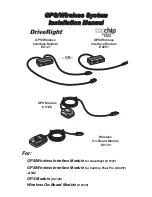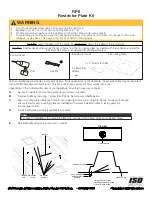
Instruction
Manual
DataVS1
Series
79
14.4.
Lighting options
Ring light
This technique is suitable for a broad range of applications. The illuminator is mounted directly on the
sensor and can illuminate any object placed in front of it. It provides diffused illumination over a small
area.
o
Advantages: It provides correct levels of illumination even for small sized objects.
Reduces shadows caused by object projections. The illuminator mounted on the sensor
ensures that light is focused on the inspection area.
o
Disadvantages: In the case of large sized objects, there could be a drop in illumination
along the edges which can create a shadow of dark pixels. High-reflectivity objects may
generate a circular glare pattern that will alter the image to be captured. Possible
applications are label date and code verification and label presence check.
Top light
This technique provides focused, extremely even illumination. The illuminator is positioned behind
the sensor and when it is orientated correctly it provides
extremely accurate inspections.
o
Advantages
: The light beam is offset compared to the sensor optics. This lets you
enhance certain target areas.
o
Disadvantages
: It is quite complicated to illuminate the object evenly, especially when it
has projections which can create shadows that can not be eliminated.
Back light
The illuminator is placed behind the target object, right before the sensor. The object between
illuminator and sensor prevents part of the light from reaching the lens and creates a silhouette
effect. The silhouette may be inspected to check dimensions and shape. Light intensity is low.
o
Advantages
: The acquired image is not affected by the surface features of the object.
Facilitates the measurement of round object diameters. Detects the presence/absence of
holes.
o
Disadvantages
: It may be physically complicated to position the illuminator behind the
object. Object surface cannot be inspected; light source must be larger than inspected
area.
Backlighting is typically used to sort objects by shape and size, measure gaps between a chip pins,
inspect objects for holes or cracks.






































